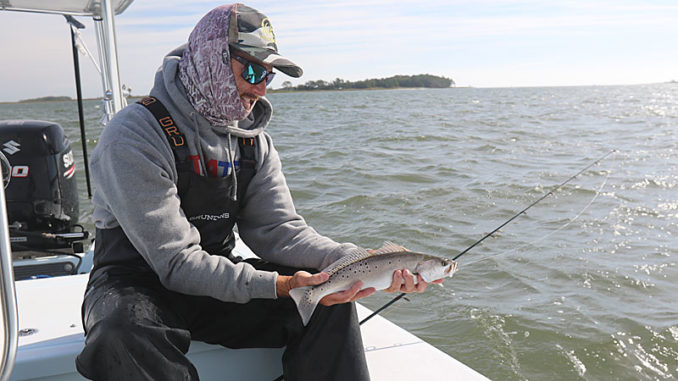
River south of Charleston is full of speckled trout
Many inshore anglers don’t give much thought or effort into catching speckled trout in February, but Stono River specks are plenty active. And except on the most brutal of cold days, they’re willing to bite.
Guide Gifford Scott of SC Flats Fishing (843-412-6429) said this time of year, it may take a little longer to find the fish. But once you do, you can catch big numbers relatively quickly.
“You might just pull up to a spot, and they are there,” Scott said. “But you might not get a bite. It changes from day to day, but as long as you’re willing to keep looking, you’ll find them. And it will be worth the time. They can bite non-stop when the conditions are right.”
Scott, who is based in Johns Island, keeps three types of areas in mind during cold months. Small creeks off of the main river are good places to start. Wooden docks are good targets, too. And oyster shell-lined banks where secondary creeks meet the main-river channel deserve attention. The Stono has plenty of all three.
“Sometimes, they’ll be at all three places. Other days, you’ll find them on just one type,” he said.
Swimbaits on jigheads are tough to beat
Gifford said swimbaits on jigheads are productive lures. He likes the D.O.A. C.A.L. shad tail on a Ralph Phillips jighead. This time of year, he sticks with a 3-inch bait on the lightest jighead the current allows him to use. He uses a variety of colors but does have one that he prefers.
“A lot of colors will work well on any given day,” he said. “But I really like the 400 Greene. It’s a green color that stands out and works well in either clear or dingy water. It’s one of those colors that just works in many different situations.”
Even more important than the color, Scott said, is the speed of retrieve.
“This time of year, you really have to slow it down. When you think you’ve slowed down enough, you need to slow it down some more,” he said. “And if you’re not getting bit at all, slow it down again. I can’t stress enough how important that is no matter what lure you’re using this time of year.”
Scott said once you find Stono River specks, it’s not uncommon to catch one on almost every cast for 15 or 20 minutes, and for the bite to completely stop after that.
“It may be that they are just that disrupted after so much action. It may be a slight change they’ve noticed in the tide or current direction. It could really be a lot of different reasons, but once it shuts down, it’s time to try some similar spots until you get on them again,” he said.


Be the first to comment